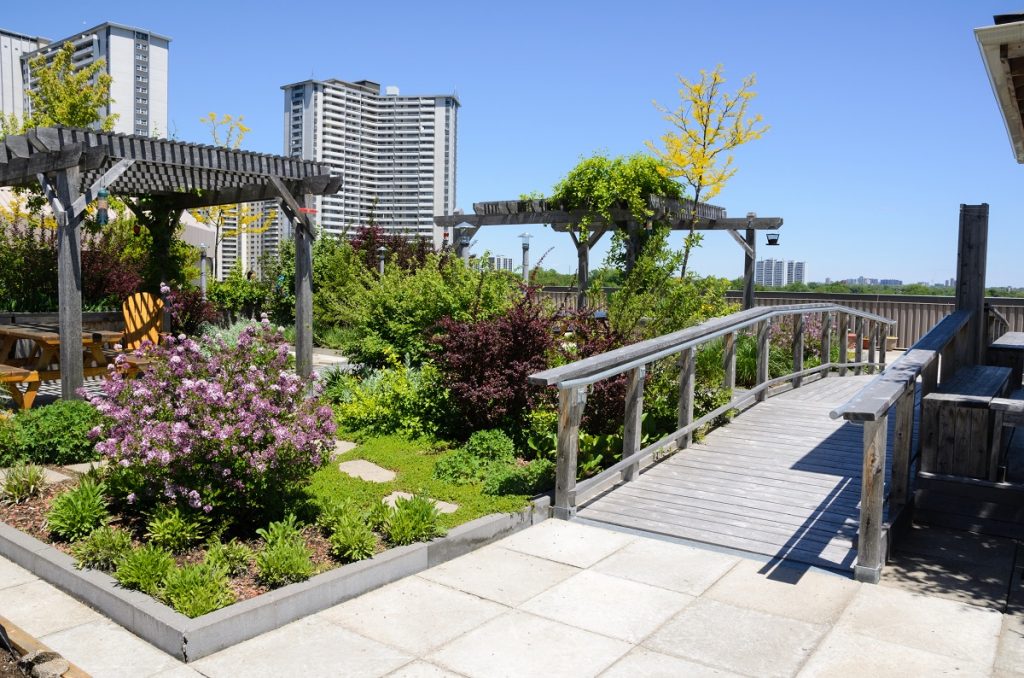Did you know that visiting a garden can increase your productivity? Research shows that being close to nature actually improves your health and performance. It’s a great way to take some time to take a break from looking at a computer screen. It’s also visually engaging and appealing.
Benefits of Building Gardens in the Office
Gardens are relaxing by nature; they’re a great way to take a break from stress. Studies have shown that having too much stress is mentally and physically harmful. It can cause psychological and emotional conditions, as well as put a strain on your heart, bones, and muscles.
Gardens also provide a space where people can socialize. When your employees and associates have meaningful relationships at work, they can achieve better teamwork and collaboration. They can work together to increase productivity. They’re also loyal, and research has shown that dedicated teammates are more likely to provide help and assistance to others.
In addition, corporate gardens are suitable for the company’s brand and image. There has been a growing tendency and corporate move to go green over the past decades concerning supporting a more sustainable environment. Today, consumers are more educated and want to support brands that align with their values. And that includes values surrounding environmental sustainability.
Good Questions Lead to Good Budgeting
Planning a budget for your garden is not an easy task. You can do this yourself or hire a landscape designer and professional landscaping contractor to give you a reasonable budget. But just in case you wanted to do some preliminary planning, I’ve come up with a few simple questions you can get started with. Hopefully, these questions will lead you to a reasonable budget.
How much is your budget for the garden?
A preliminary consideration to make is to decide on a rough estimate of how much you want to spend on your garden. Although often, estimates ended up being stretched, it’s good to give yourself a baseline; or provide the park with a designer something to work with first. Just remind yourself that the garden is going to not only provide your home with a place for recreation and relaxation, but it will also increase its value. So instead of thinking of the garden as an expense, think of it as an investment.
What is your garden design?
This is the part where you can use the help of a garden designer. Professionals have experience and training and a solid foundation on how much resources, materials, and labor will cost on average. If you’re doing this on your own, you’re going to have to consider those things individually and give them a deep thought. Your expenses would depend on the concept and vision you’ve come up with for your garden, so think wisely!
What are the features you want in your garden?
Do you want to have a minimalist landscape, or would you instead build specific structures such as a deck or a pool for a place of recreation and relaxation? You also think about the materials you want. You can do for stone walls or accents using rocks and boulders for a powerful adventurous and powerful atmosphere.
For this question, you’re going to have a thorough look at the form of the garden you want to have. These refer to three-dimensional objects that you will be putting into the park, such as plants, trees, statues, decks, patios, and so on. Your garden designer would be able to give you informed suggestions on these. For example, they can give you guidelines on the patio installation. Otherwise, you can search for inspiration online.
Where will you source your materials?
Will you be importing materials from another location, or will you buy locally? Will you be recycling materials or purchase new ones? It’s essential to understand and have a firm grasp on the varying prices of materials. Prices of plants, trees, rockeries, or soil can change in different cities; and other contractors and suppliers.
Naturally, you would be able to save if you’ll wait for deals, recycle or use second-hand materials. For example, you don’t need to buy plants and trees if you already have seeds from the previous harvest; or you can get cuttings.
Location
The flowers, trees, greens, and veggies you can put in your garden depend on your location’s prevailing conditions. Some features and structures are also more preferable in certain climates in certain places than in others. Material cost may vary depending on where you are, as prices may differ from city to city. You’ll be surprised! The demographics of certain places can affect how much suppliers and contractors charge. So take a minute and think about where you are right now and how much a garden could cost compared to other places.
How much does local labor cost?
You need at least two weeks of labor to complete a garden, depending on its size and design. Hiring a professional garden designer can cut down costs and expenses. They have the proper contacts, and contractors are more likely to give you a good deal through their connections. So other than plants, trees, and construction materials for the features in your garden, you also need to really think about and consider how much you’re willing to pay to have them installed.
A good garden requires a good vision—but turning it into reality is also a matter of budgeting. There are no straightjacket rules to this; you can choose to wing it independently, although it’s highly advisable to hire professionals instead. Just remember that setting out to make a garden is a meaningful and fulfilling commitment with benefits you can reap and enjoy in the long run.

